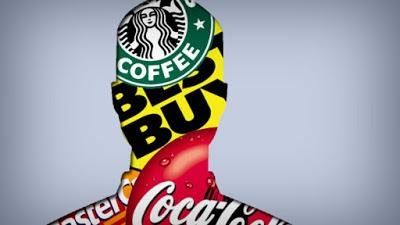Brands are living beings; they breathe, feed, age, and sometimes vanish with time if not provided the care they need to flourish. What make a brand a living being is the customers; how they connect with the brand emotionally, and how they perceive and understand what it represents of values.
All of which that has been mentioned is part of the brand persona; marketers mainly decide how the brand should be represented – the human aspect of the brand which customers associate with and feel that it is a living creature which they can communicate with.
When a brand has persona, when it becomes human it triggers the perception of intentional action as well as being responsible for the action. In other words, customers might connect with the brand as they feel it represents them in a way however, any problems with the products or services or with the brand itself will be treated as a human problem with equivalent ramifications – which will be discussed thoroughly in other parts of the article.

The humanization process of brands is part of what can be termed as anthropomorphism of a brand, to make it human-like, giving it a face, enriching it with stories, and connecting with customers who has congruent characteristics with it.
So, how the process of brand anthropomorphism takes place?
1. Brand Persona (Personification):
Customers have relationships with their brands; they treat them as living entities, as part of them – what the entire brand represents, the metaphors it has, the human-like characters which put them in contact and constant communication on an emotional level with the brand.
Customers prefer human brands, their stories, and the concepts which go beyond the price or need that makes them make the purchase. The controlling factor of the brand’s persona is based on the customers’ lifestyles. A Harley Davidson biker is all the time on the road, in packs and groups, looking to explore, with a need for that manly sound the bike makes on the road, roaring for freedom, independence, and unity with other members.
Brand persona can be expressed as well in a character or icon representation – brands can create a culture where the soul of the brand is the representation of its character. However, it is easier to identify a brand or associate with a character or a living being for customers to easily decode the emotional meaning of the brand and what does it stand for because physical characteristics are overlaid over emotional ones.
Other ways of creating that representation is with the use of a brand’s spokesperson as to associate with that person’s characteristics and how they can be similar to the brand itself. The persona creation process as well can be done with packaging. If we examined some of the prominent brands, we can notice that their packaging can be symbolic to the human body. For example, Dior and the use of feminine shaped bottles with collars and golden gowns.
2. Brand Metaphors
Brands when they are alive, they have features or identifiable metaphors which give the understanding of a brand – enabling connection and communication with the customers. The brand’s poetics comprised of various elements (characters, stories, persona, imagery, music, and other representative components) is part of the anthropomorphism process.
For example, the Michelin man who was the symbol of the brand for a long time. There is additionally the McDonald’s clown, the owl of TripAdvisor, Mickey and Mini mouse of Disney, and the cheetah of Cheetos. Humanizing a brand doesn’t mean using only humans as a representation, in fact, it doesn’t mean as well using a symbol at all. It is all about the story which the brand has – the character representation is part of the storytelling process.
The main problem however, is that customers are unable to extend or even personalize the brand narratives as they are told by the brand itself. In its essence, the humanization strategy takes place in accordance with the targeted segments’ attributes and not the other way around.
What made the Michelin man representative of the brand? The brand owner back in the early 1900’s chose this character as a symbol of the brand, without any consideration for customers’ opinions or the market itself. The character is yet effective as it was modernized and is connected with the brand when viewed. However, data and consumer research plays a major role in today’s market on how should be created or renovated in accordance with the characters and attributes of the customers – as a person that clicks with another to later become friends.
3. The Competing Brands (The Consideration Process)
Brands do not live in their own world; they compete with other brands in the market. The consideration process tries to understand how similar brands (or competing ones) represent themselves. It might be a colour, a location, a specific type of melody, the use of a particular scent, and so forth.
Innovative brands however, choose to be different in all ways from other brands in the market – they are unique in their offering and different in how they represent themselves. For example, Apply chose white as a colour for all of its products even when all the competing computer and phone manufacturing companies mainly use black.
Apple as a brand is different in many ways; it caters to innovative customers in the market place who chose to be different in many ways – including the choice of their brands. It is very convenient for an Apple customer to use a Mac computer (without consideration for how complex it can be) as it completes the customers in a way – representing their innovative nature and capacity to digest complexion and produce the best of results.

What Can Go Wrong with Brand Anthropomorphism?
Providing human-like attributes creating mental states for brands using the process of anthropomorphism prompts customers to apply their beliefs about the social world when judging a brand. When providing human-like capabilities to a brand (a non-human entity) – we grant the brand value and moral worth thus the appearance of what can be termed as the anthropomorphism on evaluations.
As such, an anthropomorphic positioning of a brand can have negative repercussions if the brand is perceived as responsible for its wrongdoings. Given the potential negative repercussions of brand anthropomorphism in these instances, it is critical to understand whether humanizing a brand can backfire when product failure occurs and which factors may facilitate or inhibit these negative sides of brand anthropomorphism.
In the marketplace, brands positioned with anthropomorphic features can receive negative publicity caused by their product wrongdoings. For example, in 2006, M&M branded menorahs were recalled because of a potential fire hazard. Later, in 2008, M&M’s received additional negative publicity when traces of melamine, a poisonous substance, were found in M&M candies.
Consumers perceive brands endowed with human features as being mindful and possessing intentions. People have a fundamental tendency to attribute others’ behaviours to stable traits rather than to unstable contextual influences; therefore, consumers may attribute product wrongdoings to stable traits of humanized brands and consider them responsible.
The extent to which people perceive an entity as responsible for an action directly drives their willingness to punish this entity for its negative behaviour. Thus, if consumers view anthropomorphism brands as performing actions intentionally, their evaluations of the brands’ wrongdoings should be more negative than those of non-humanized brands.
At the end, brand anthropomorphism can be a double edged sword; if making brands more humane can create connections and engagement with the customers it can as well allow more liberty for judgement as viewing the brand as a human. The best approach is for brands to represent that human part at its best – doing mistakes
If the brand can be judged by customers as human entities they might as well expect them to do mistakes as humans do and thus connect effectively with the customers.


















 Follow us on LinkedIn
Follow us on LinkedIn





.svg)
Start the conversation
Become a member of Product Marketing Alliance to start commenting.
Sign up now